Springfield Armory was once again the primary sponsor of what has become an iconic event in the world of competitive sport shooting. The Pin Shoot (formerly the Second Chance Shoot) has a more than 30-year history, drawing shooters from all over the country and abroad to the Davis Range in the resort town of Central Lake, Michigan. There are events for pistol and revolver, carbine and shotgun, individuals and teams.
The prize table was rich, with 150 contestants vying for some 90 prize guns, mostly brand-new Springfield Armory firearms, along with other valuable merchandise awards. During the awards ceremony, winners are called forward in order of their scores, top to bottom, and allowed to pick their choices.
Early in the epoch of this event, founder Richard Davis realized the match was drawing world champions like Jerry Barnhart, Jerry Miculek and Rob Leatham. To level the playing field, he created two shooter categories: Master Blaster (MB) and Ordinary Standard Shooter (OSS). Those who had a history of winning big at this event earned Master status, and OSS was everyone else.
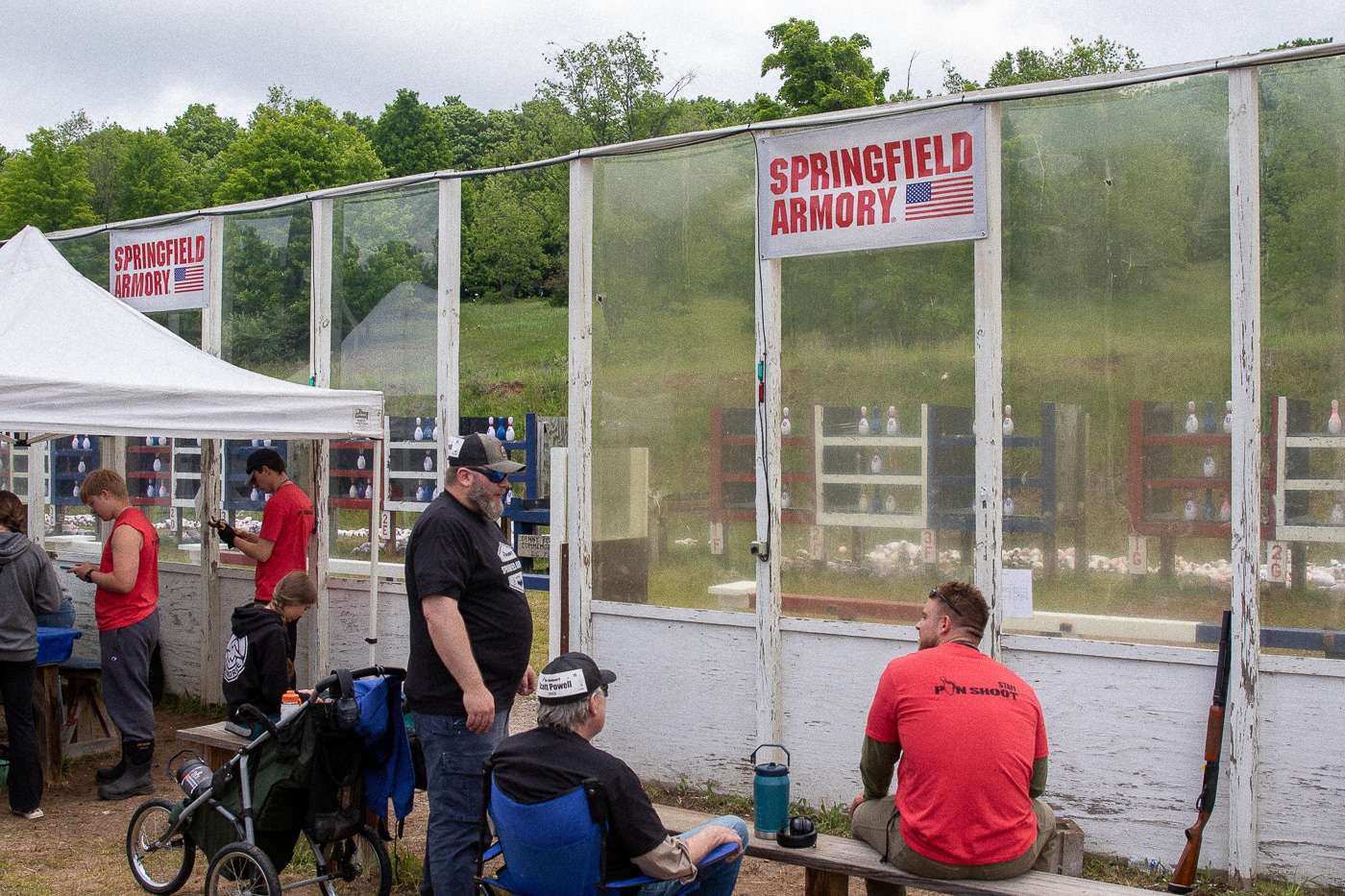
During the awards, first crack at the prize table goes to the very top shooter in the given event, usually (but not always!) a Master, and the next person called to the prize table will be the highest scoring OSS competitor. It goes that way until the prize table is empty. This levels the playing field considerably, and keeps the sharks from devouring the newcomers.
Atmosphere
Over the decades, this event has evolved into so much of a social event that a few people come just to hang out with like-minded gun enthusiasts. For those of us who’ve been regular attendees, it’s like a reunion.
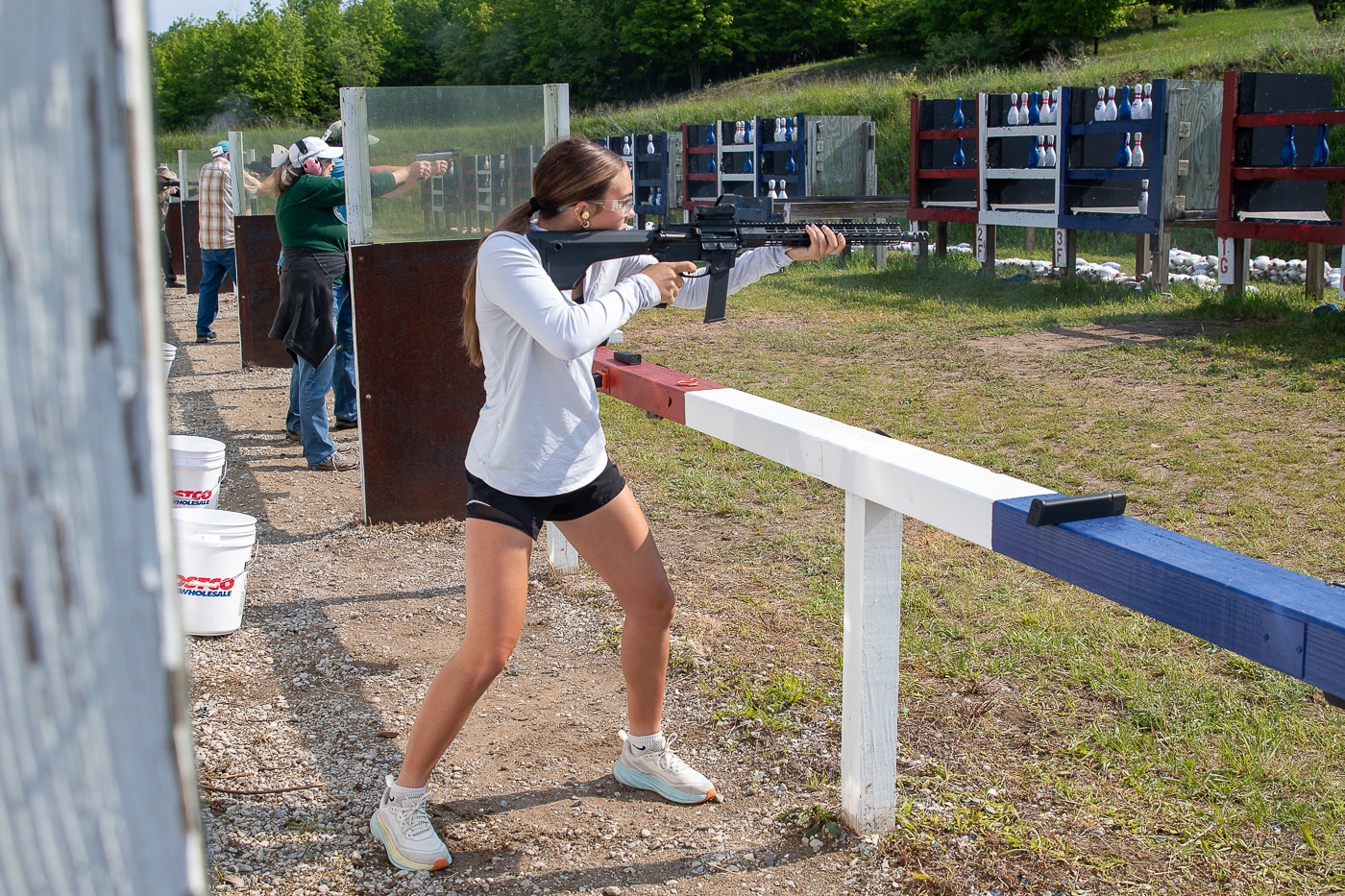
Newcomers are invited to sit with the old heads at the sumptuous lunches cooked each day by the local Lions Club at the Springfield Armory Pavilion. During breaks from shooting, attendees could sit at those picnic tables and listen to conversations between master shooters and master gunsmiths discussing the fine points of their trades, learning things they couldn’t pick up even at professional seminars.
The event is handicap-friendly. Those in wheelchairs are not disadvantaged, since there is little if any tactical movement: the job is to shoot until all your targets are off the table, as multiple timers with stopwatches record how long it took from the start signal to raise your gun from low ready until the last target was on the ground. The targets, regulation wooden bowling pins, tend to spin unpredictably if hit off center, requiring additional time-consuming shots. Retired MB Mike Jaye leads those who drive mobility-challenged shooters around the range on golf carts.
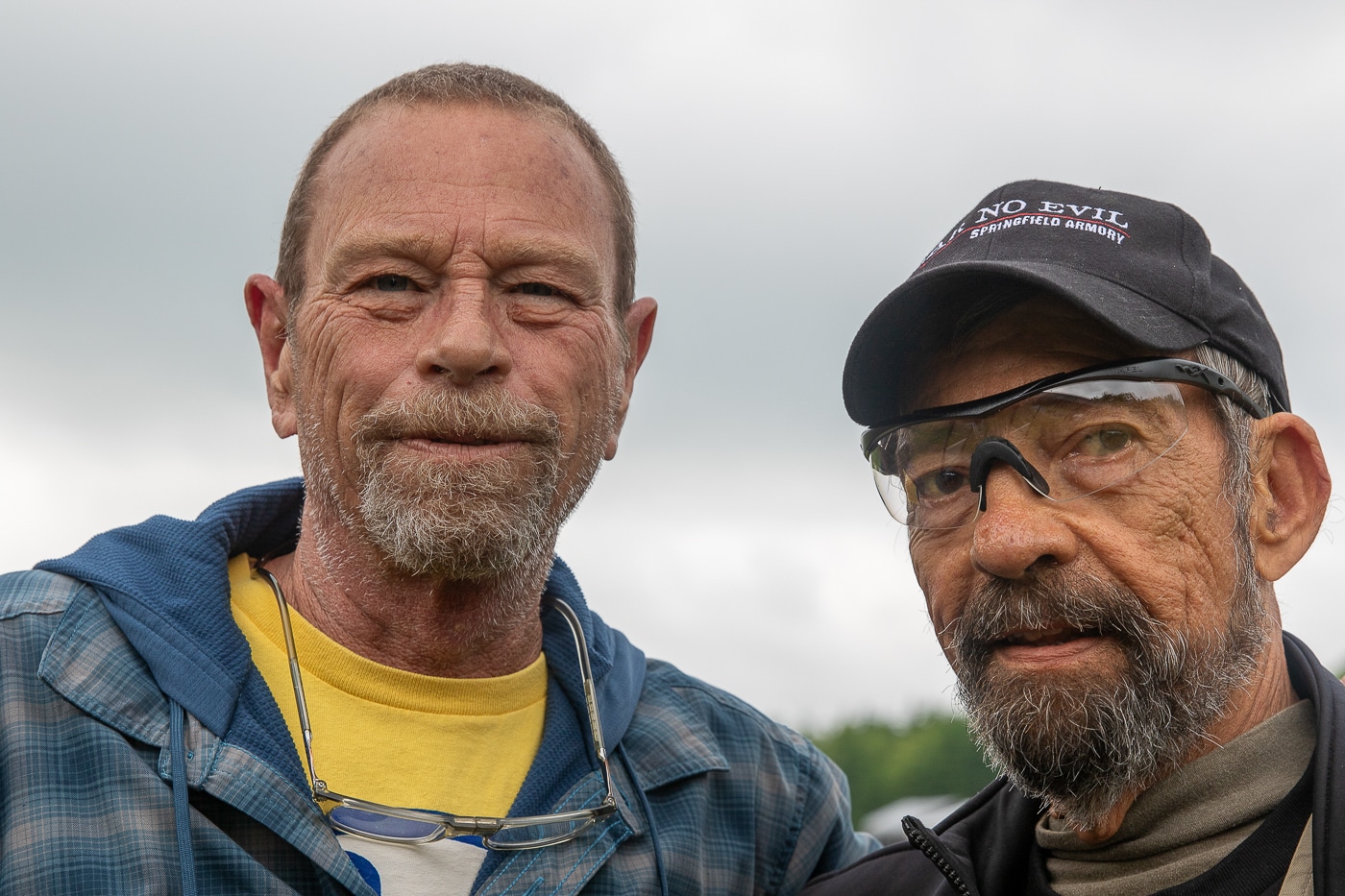
It’s a very visual match, and as a result there are bleachers on the hillside behind the firing line. It’s easy — and exciting — to see how the different shooters clear their tables. During breaks when the pinsetters are replacing targets, founder Richard Davis plays “Trivia Quiz” with the audience for prizes.
Of all the big national matches I’ve been to, this one has the least pressure. In most shooting sports, one bad stage can leave you out of the running. Here, in the optional events, if you didn’t like your score you can sign up to shoot that particular event again. The only exception is The Mains.
In the Main Events, you have six tables with five white target pins each, interspersed with blue pins that are “no-shoots.” If one tips over, it adds five seconds to your score. The worst of your six tables is thrown out of your main score, held in reserve as a tie-breaker. If you are unhappy with your aggregate score in one Main Event, you can’t shoot it again — but, you can sign up for another Main Event.
Events
In the five-pin table Main Events, there are five handgun categories. Space Gun permits optical sights and recoil compensators. Pin Gun requires iron sights but still allows comps. Stock Gun forbids both comps and optics. Concealed Carry allows carry optics, but limits barrel length to 4.25”. All of these require heavy pins to be blown three feet back, so .45 ACP is the most popular choice followed by 10mm, .357 Magnum, and a small but tough contingent firing .50 GI.
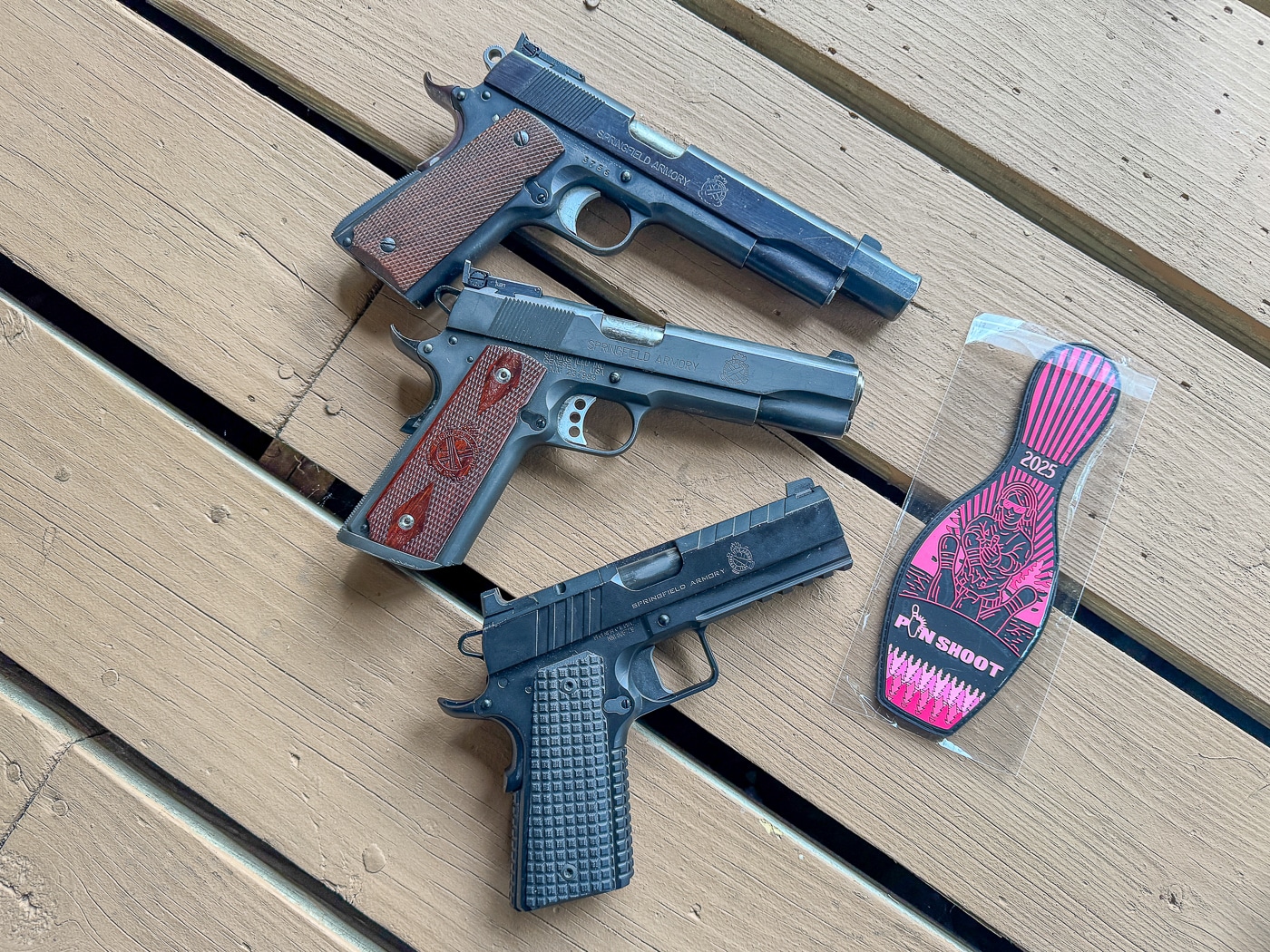
There’s one more five-pin Main Event. Stock Minor was introduced in the last few years to allow for the fact that it’s becoming a “9mm world” and many shooters don’t even own more powerful handguns. Accordingly, the pins in Minor are set a little farther back on the table to make it easier for 9mm rounds to take them all the way off. In most of the handgun Mains, there can be only eight rounds in the gun to start.
Optional events? Counting the Mains, there are some 20 “gun games you can play for gun prizes” at the Pin Shoot. There’s 9X12 for 9mm pistols where a dozen pins have to be knocked completely off (not just tipped over as in the past), so this is another case where the targets are set farther back. There’s the eight-pin revolver event, with a mandatory reload and only six rounds allowed in the cylinder to start. (Only six rounds to start in Concealed Carry, too.) There are “long gun Mains” with only five targets for 12-gauge shotguns with buckshot (has to be 00 size or larger for safety reasons, to prevent bounce-back) and pistol caliber carbines. Individual long gun events include eight-pin shotgun and twelve-pin pistol caliber carbine.
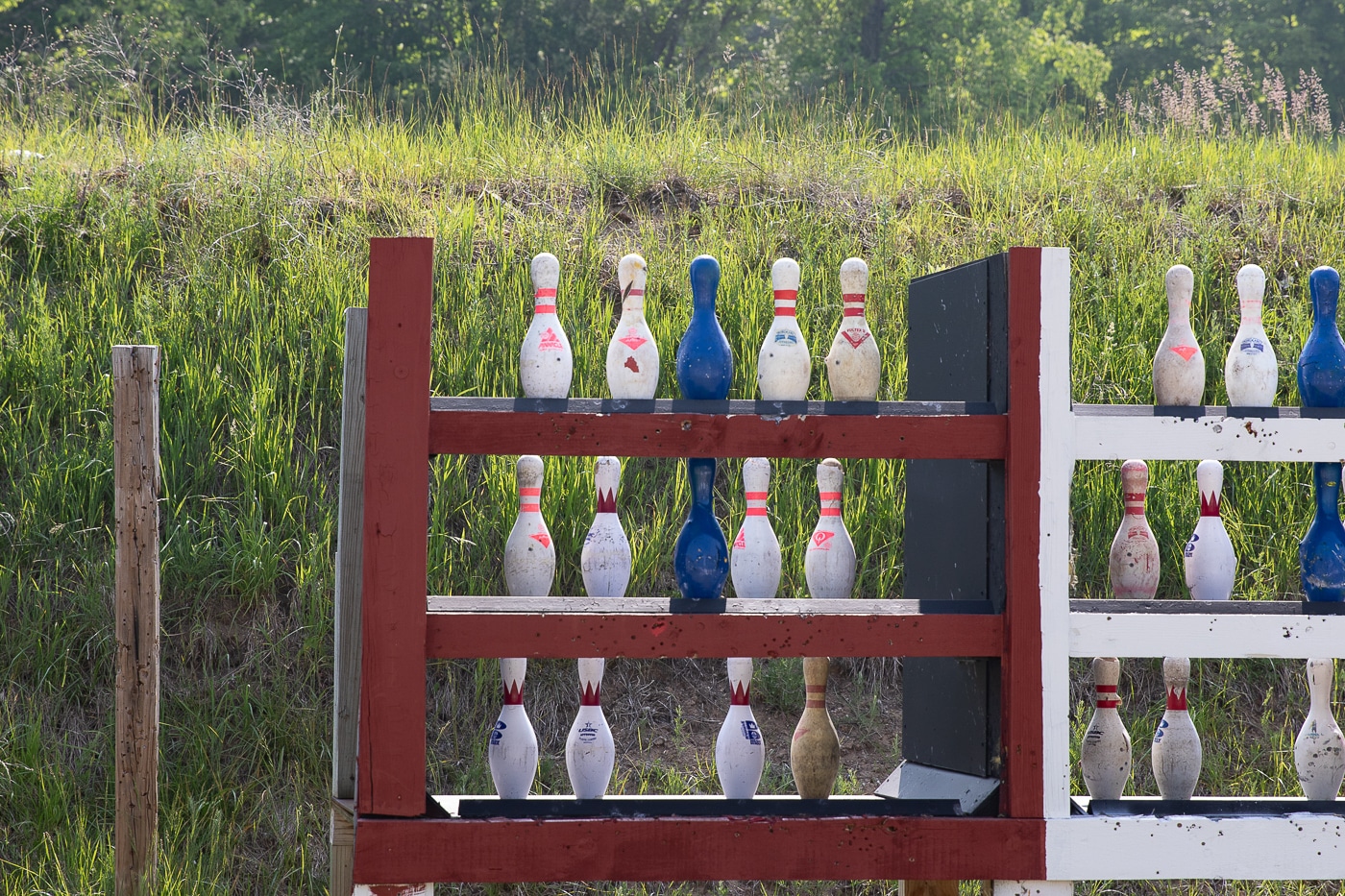
Over on the long range on the right side of the facility are long target arrays of tiny steel pins for carbines and big steel targets for rifled shotgun slugs, and on the left are the .22 events. You can use your own rifle or their provided rifle, your own rimfire pistol or a provided 10-shot .22 revolver. Team events include two-person handgun, three-person with one handgun and two shotguns, and two-person with rifles.
What to Bring
This depends how much you want to shoot. More than one competitor this year brought a single pistol with which to shoot multiple games. Some brought carloads of guns and shot every single event! This writer got by with a trio of Springfield Armory 1911 .45’s: an old Plaxco-tuned Pin Gun that I shot there back in the ’80s that served for Space, Pin, and teams; an out of the box Range Officer for Stock in both Major and Minor; and a 4.25” Emissary for Concealed Carry.
You’ll be issued a name tag for the back of your cap or shirt so the timers will know whom they’re scoring. If you sign up early you get a bargain deal on “Davis Dough,” scrip you can use for entry fees in the optionals.
Bring a minimum of six magazines or speedloaders, and another full box of 50 rounds each time you come to the firing line. After every three tables there’s a lull while the pins are being reset, and that’s when you refill the mags and loaders. Why six? Because if you run dry you want to quickly reload and finish clearing the table before your allotted 15 seconds runs out.
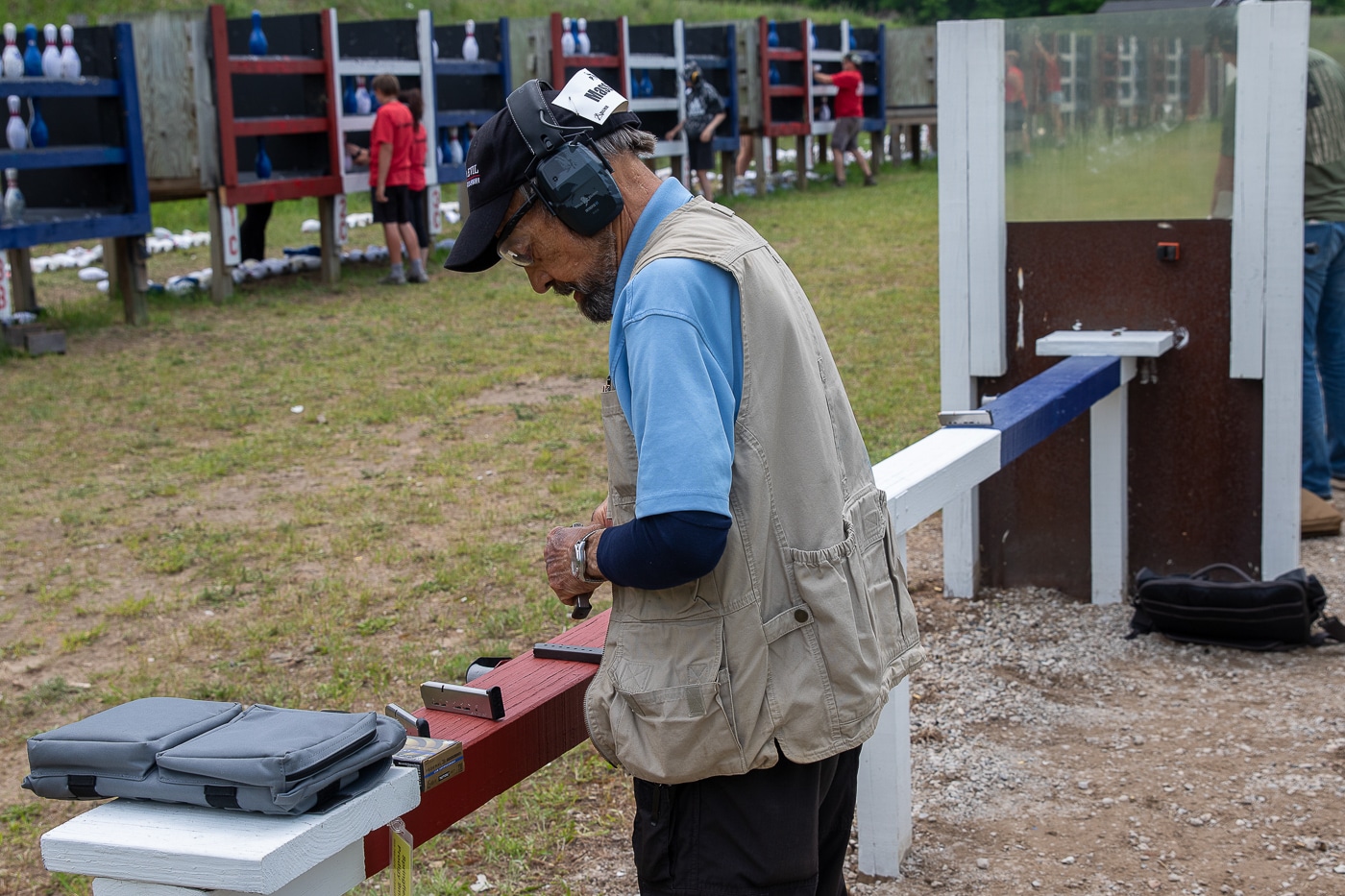
Bring more ammo than you think you need. You may have come alone and not planned on team shooting, but if you do well one of the Masters will invite you to shoot with him or her. Only one Master per team is allowed. You’ve just received a helluva compliment, and a chance to win another gun.
That extra ammo will also allow you to enter the morning shoot-offs, where entry fee is cash and so is the prize. It’s a great warmup for later in the day when you’re shooting for prize guns. This year, there was a special Springfield Armory Shootoff, too.
You can find all the details at www.pinshoot.com. Go once, and you’ll see why I and so many others keep coming back. I hope to see you there in June of 2026!
Editor’s Note: Please be sure to check out The Armory Life Forum, where you can comment about our daily articles, as well as just talk guns and gear. Click the “Go To Forum Thread” link below to jump in and discuss this article and much more!
Read the full article here

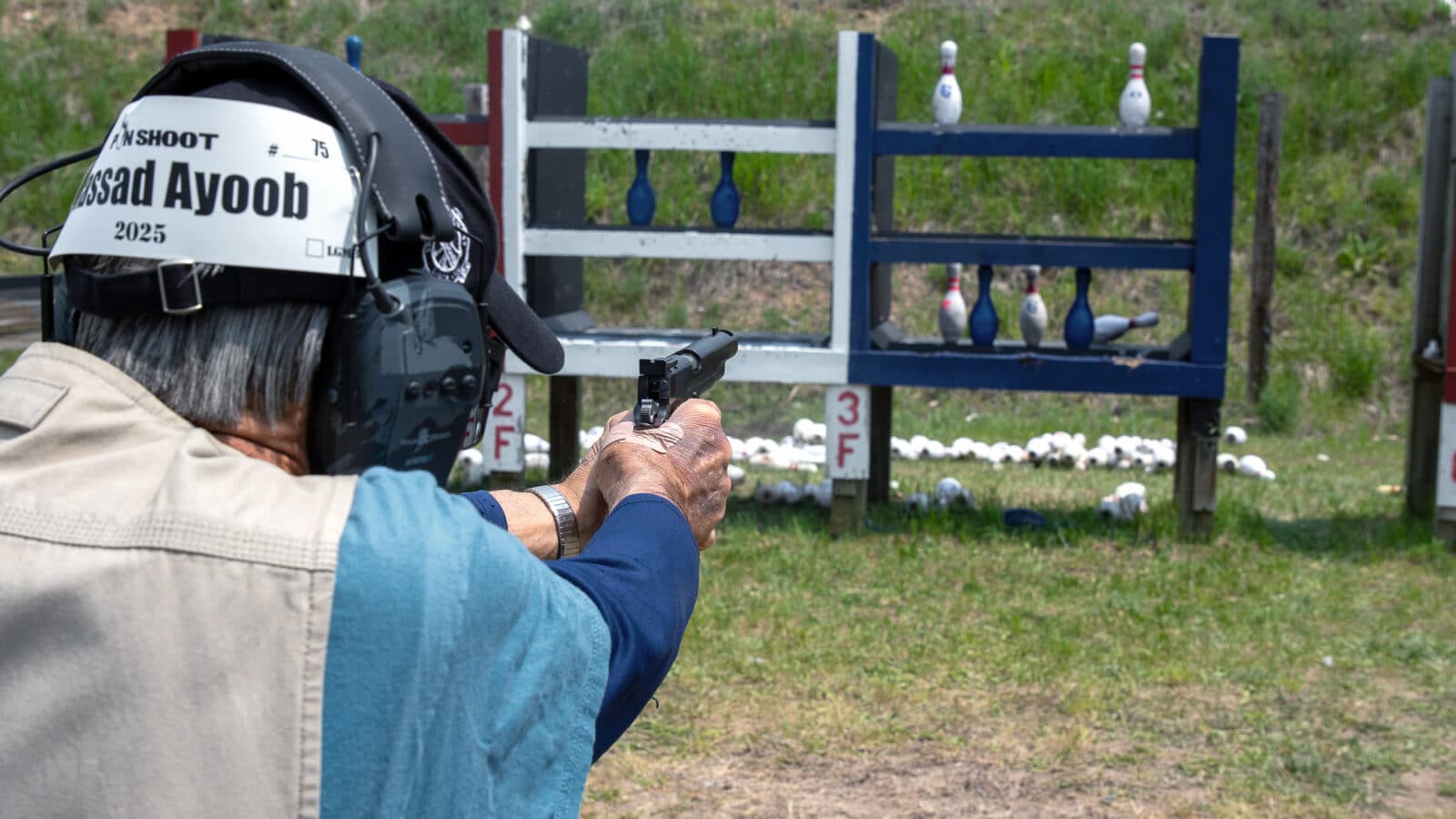
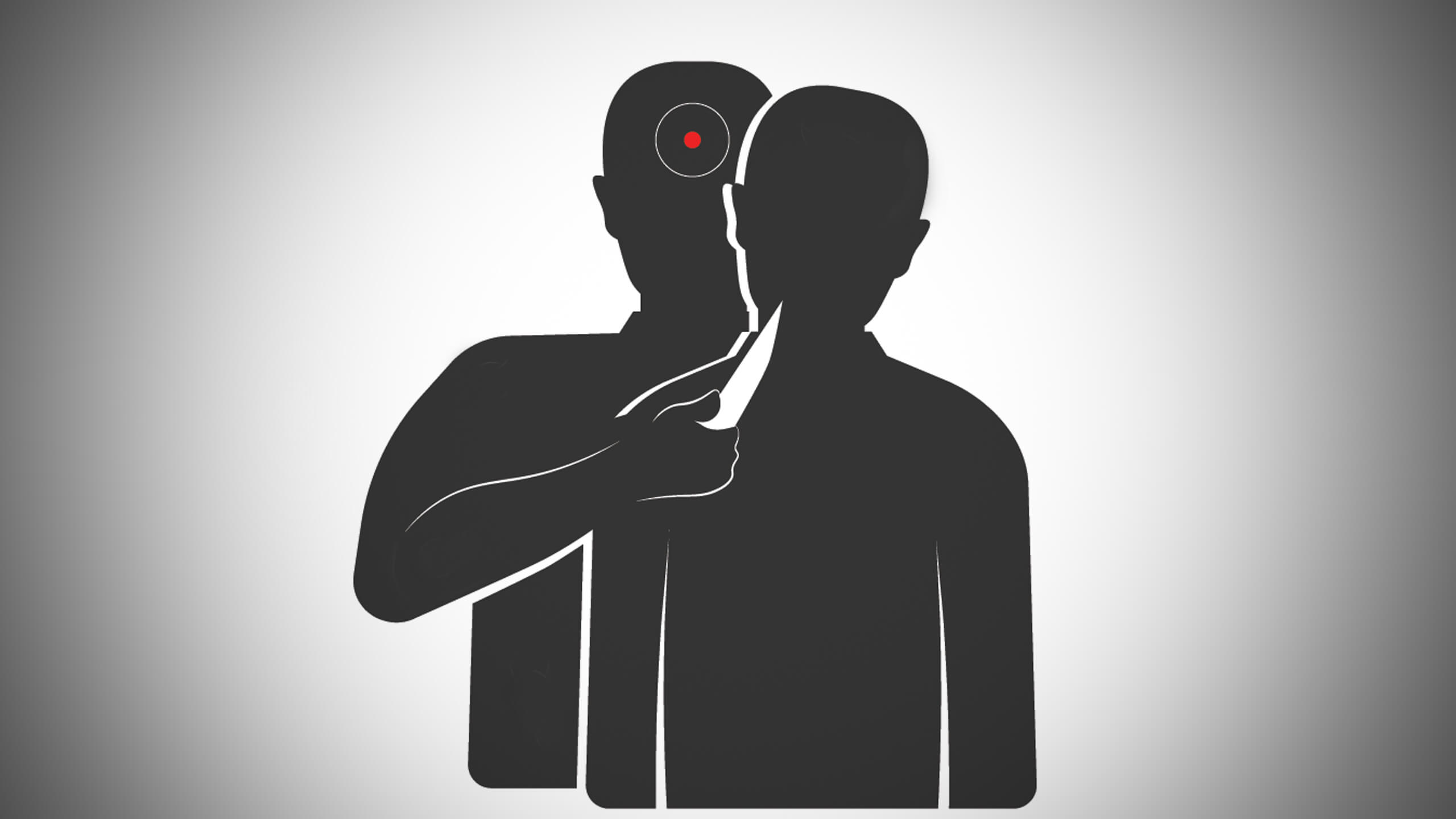

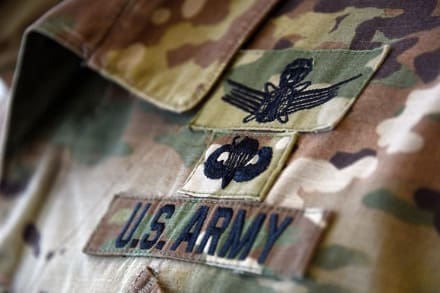

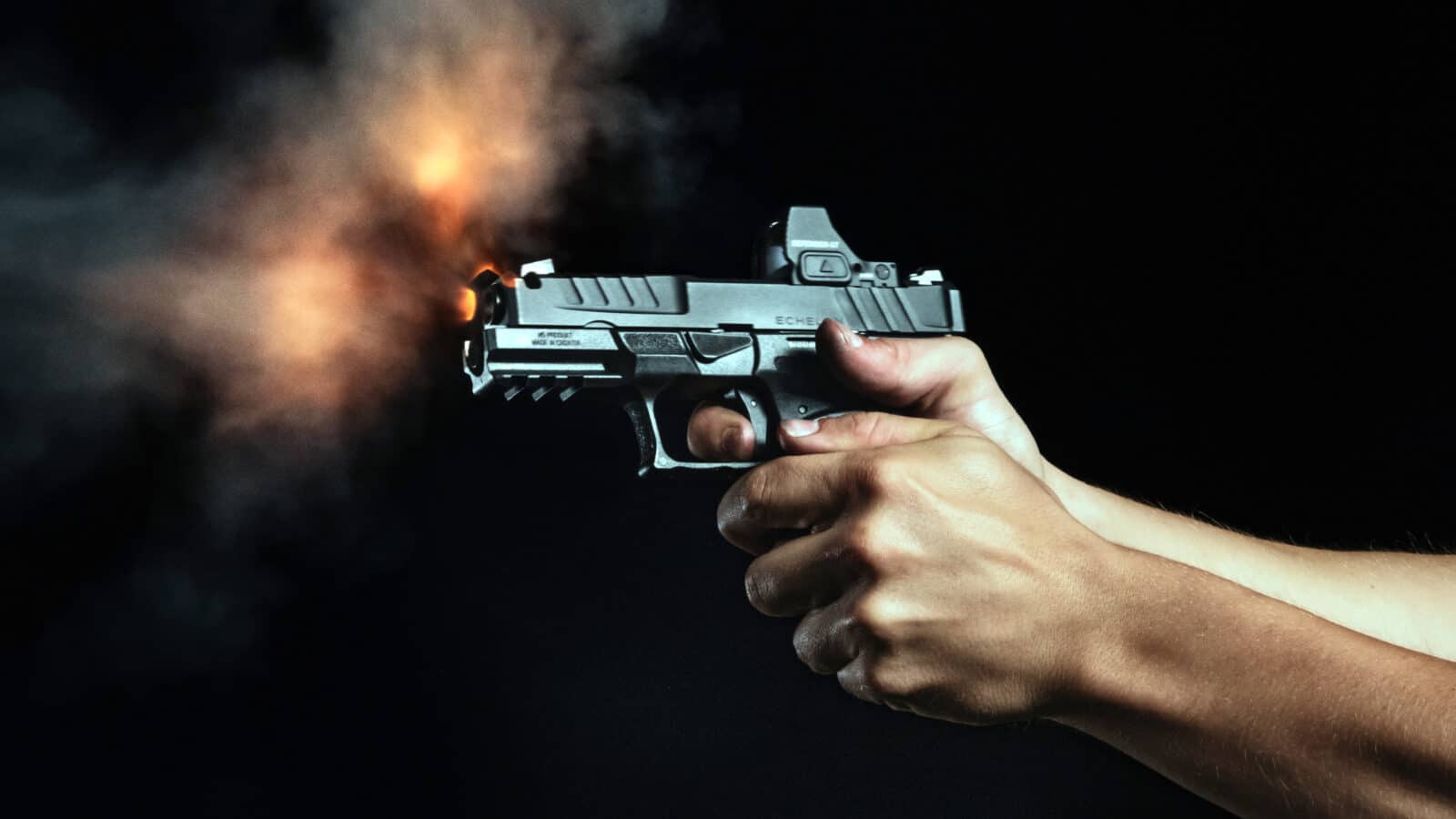
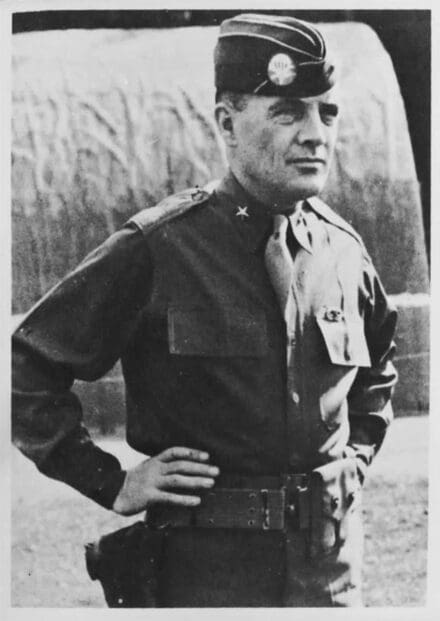
Leave a Reply